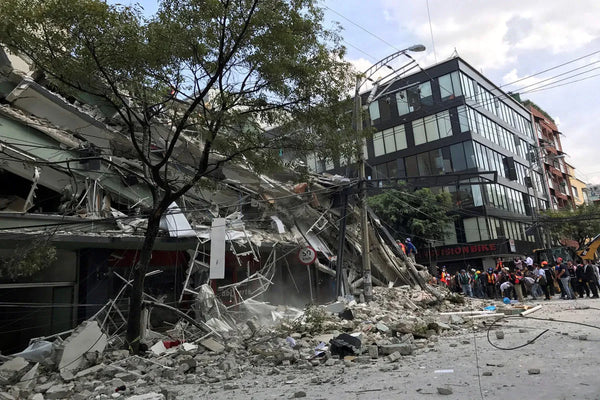Solar energy is the most accessible form of green, renewable energy in the Philippines. However, cost is usually a concern for most people considering installing solar panels and other necessary equipment. Fortunately, solar panels here are relatively affordable and offer multiple opportunities to save some money.
Here is a comprehensive guide on solar panel prices in the Philippines in 2024. It also includes an overview of the factors influencing solar panel prices to help you make a calculated decision. Moreover, it recommends tips to save money on solar panels and reviews two affordable and reliable solar panel models from BLUETTI to help point you in the right direction.
Average Solar Panel Prices in the Philippines

Solar panel prices in the Philippines differ based on several factors, including the type of property (residential or commercial). On the one hand, solar panels for commercial properties cost between 20,000 and 30,000 pesos per kilowatt. On the other hand, solar panels for residential properties cost slightly more, ranging from 30,000 to 50,000 pesos per kilowatt.
Factors that Influence Solar Panel Prices in the Philippines
The cost of buying and installing solar panels in the Philippines depends on various factors, such as type and size. Here is a closer look at the various factors that influence solar panel prices:
· Panel Material Type
Solar panels come in three material types: monocrystalline, polycrystalline, or thin-film. Notably, monocrystalline solar panels offer the highest efficiency and power output, making them the best. However, they are also slightly more expensive than polycrystalline and thin-film solar panels.
In contrast, thin-film solar panels are the cheapest option, but they have the lowest efficiency and power output rates. Overall, polycrystalline solar panels are the most popular option because they are both reliable and cost-efficient.
· Installation Services
Installation services also add to the cost of solar panels. Notably, installation costs vary depending on various factors. For example, large and more complex solar energy systems cost more to install than smaller and simpler systems. Moreover, complex solar energy systems require additional equipment, such as batteries, inverters, and charge controllers, which also add to the cost. Finally, costs also vary depending on the installation service provider and location.
· Brand & Quality
Solar panel prices also vary from one brand to another, not considering other factors. However, the quality of solar panels also varies among brands, which is an important consideration. Moreover, some brands offer more features on their solar panels.
· Government Incentives
Finally, the cost of buying and installing solar panels also depends on the incentives accessible to you. For example, businesses using solar power for commercial purposes can take advantage of the seven-year income tax holiday (ITH), income tax reductions, zero VAT on the cost of purchasing panels and other equipment, and duty exemptions on imported spare parts.
How to Save on Solar Panel Costs in the Philippines?

Overall, solar panels are relatively affordable in the Philippines. However, you can still save a few hundred or thousand pesos through several ways, from shopping smarter to leveraging incentives. Here is an overview of four sure ways to save on solar panel costs:
· Compare Different Brands & Models
Brands also influence solar panel prices. Interestingly, solar panels with similar qualities and features from two different brands can differ in price.
As such, it is recommended to compare different brands’ prices. Moreover, you should also compare different brands’ qualities and features to justify the difference in prices. Ideally, you should go for a cost-efficient solar panel that offers maximum value for your money.
· Compare Installation Service Providers
Solar panel installation costs vary from one service provider to another, not considering factors such as size and complexity. Ideally, you should compare the quotes from different technicians to identify the most affordable ones.
However, you should also compare different technicians’ scope and quality of services to avoid getting shortchanged just to save a few pesos. Overall, you shouldn’t compromise on the size and complexity of your solar energy system or the quality of installation services to save money on installation costs.
· Take Advantage of Incentives
Solar power incentives from the government and NGOs can save you thousands of pesos in the short and long terms. For example, the government offers multiple incentives to businesses that develop their own solar power solutions. They include tax holidays, VAT exemptions, and income tax reductions. Moreover, all residents across the country can join the net-metering program to transfer their excess solar power to the grid in exchange for electricity credits.
· Prioritize Quality Over Affordability
Low-quality solar panels cost thousands of pesos less than high-quality ones. However, you can save more money in the long term using high-quality solar panels because of their efficiency and durability.
Do I Need a Permit to Install Solar Panels in the Philippines?
Notably, you need a permit and other documents to install solar panels in the Philippines. However, the documents required and the process of obtaining a permit vary from one region to another. Overall, the requirements are simplest in Manila, where you only need an application for an electrical permit plus five sets of electrical plans and specifications.
Notably, the requirements also vary based on whether the building is new or old. To this end, some locations also require a roof building permit when installing solar panels. Other common requirements include a Barangay Clearance and a Barangay Permit.
The process for obtaining the necessary permits takes varying periods, depending on the location. Notably, applications in Manila take one business day to process, while other cities usually take between one and five business days.
Understandably, applying for permits to install solar panels can be confusing. Fortunately, some installation service providers can handle permit applications on your behalf, so check when hiring.
Is it Worth Buying a Portable Solar Panel?
Buying portable solar panels in the Philippines is definitely worth it. They offer many benefits, including the overall convenience of generating power wherever you go. To this end, portable solar panels have many versatile uses, including the following:
- Camping
- Off-grid living
- Road trips
- Remote working
Interestingly, you can also set up portable solar panels at your home or workplace to supplement or replace power from the grid. To this end, you can make considerable savings on your electricity bill.
Ultimately, the quality of your portable solar panels determines whether or not they are worth buying. Fortunately, BLUETTI offers some of the best solar panels in the country. Here is an overview of two reliable and cost-efficient BLUETTI portable solar panels to consider:
BLUETTI PV350 Solar Panel

The BLUETTI PV350 is an ideal portable solar panel to help you harness the sun’s free energy. Overall, its design optimizes durability and power output. Here is a quick overview of the panel’s main features:
· High Conversion Rate
This solar panel is made of monocrystalline material, which is the most efficient for converting sunlight to electric energy. Specifically, it has a conversion rate of up to 23.4%, which is higher than average. Moreover, it has a 95% transparency rating and works well in low-light conditions. It also comes with four stands for positioning to maximize exposure to sunlight.
· Water-Resistant & Durable
This portable solar panel is water-resistant. Specifically, it is resistant to splashes of water – however, you shouldn’t place it directly under rainwater or let it get soaked. Moreover, it is made of long-lasting ETFE material, making it durable and easy to maintain.
· Versatility & Compatibility
Portable solar panels are ideal for use with solar generators, which feature powerful batteries for energy storage. Notably, the BLUETTI 03350 solar panel is compatible with many solar generator brands and models.
· Easily Portable
This foldable solar measures about 35 inches wide and 24 inches tall when folded, making it easily portable. Moreover, it weighs only 30 pounds, making it easy to carry around for prolonged periods.
BLUETTI PV420 Solar Panel

The BLUETTI PV420 solar panel is an excellent alternative to the PV350 if you are looking for more power. It also comes with several notable features, including the following:
· High Power Output
This portable solar panel is made of monocrystalline material and has a conversion rate of up to 23.4%. Overall, it can capture and generate up to 2kWh of electricity when exposed to sunlight for at least six hours.
· Easy to Use
The solar panel comes with an adjustable kickstand design that supports three angles. Additionally, it is foldable and lightweight, making it easily portable. Moreover, it is compatible with many solar generators, and you can easily plug it into other appliances.
· Durable Design
The BLUETTI PV420 solar panel can last for years thanks to its durable design. Notably, it is splash-proof and made of long-lasting ETFE materials.
Final Thoughts
The Philippines is a tropical country. To this end, it receives plenty of sunshine all year round – approximately 5 hours of sunshine per day. Overall, it is ideal weather to harness solar energy.
Fortunately, solar panels here are relatively affordable in the Philippines. Moreover, there are several ways to save a few hundred or thousand pesos. Notably, the two recommended solar panels from BLUETTI are affordable and offer excellent value for your money.
You Might Also Like:
| Best Portable Solar Generator Philippines | Brownout vs Blackout | Before, During, and After a Typhoon | Power Outages in Rainy Season Philippines |






